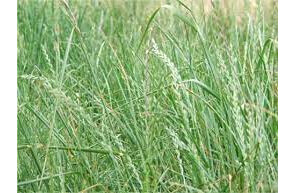
Ryegrass staggers is a nervous disease affecting sheep, cattle, horses, and deer after they have grazed endophyte-affected ryegrass dominant pastures under close grazing conditions.
Ryegrass staggers should not be confused with “grass staggers”- a nervous disease caused by a deficiency of magnesium.
Endophyte:
Endophyte is a fungus found in the leaf, leaf sheath, stem and seed of perennial ryegrass. The fungus produces several toxins: Lolitrem B is the major toxin associated with ryegrass staggers and Peramine protects the ryegrass plant from attack by the Argentine Stem Weevil.
Endophyte infected ryegrass has pasture production advantages over endophyte free ryegrass, but endophyte free ryegrass will not cause ryegrass staggers.
Safe Ryegrass:
There has been a vast amount of research done to create cultivars of ryegrass that are infected with endophyte fungi which produce low levels of Lolitrem B while still producing high levels of Peramine for protection against the Argentine Stem Weevil.
The Impact.
Nervous Signs:
Lolitrem B affects nerves and muscles causing staggering when animals move. If animals get a sudden fright or are chased by dogs etc. they may fall over. When left to graze affected animals appear completely normal.
Summer and Autumn:
Ryegrass staggers tends to be more common during summer and autumn. Animals develop signs within 7-14 days of being placed on toxic pastures.
Animal Growth Rates:
Growth rates of weaned calves may be reduced, and in some cases there will be weight loss because calves’ ability to graze and compete for food effectively is reduced. Affected animals may be difficult to yard for routine procedures such as vaccinations and worm treatments.
Misadventure:
In severe cases stock losses may result from misadventure e.g. drowning in dams, caught in natural hazards such as gullies, ditches and fences.
Diagnosis:
Diagnosis is based on clinical signs and the presence of endophyte infected ryegrass.
Management and Control.
There is no specific treatment for affected animals. They will recover spontaneously after a few weeks. Recovery will be faster if animals can be shifted to pastures that do not contain infected ryegrass, or fed supplements before pasture. Avoiding grazing to very low residuals can also help.
Affected animals can be supported with appetite stimulants, and high energy concentrates if required.
Whenever possible ensure animals are not at risk of falling down banks or into water drains.